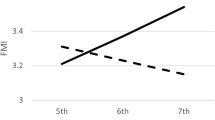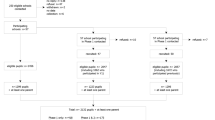Abstract
The purpose of this study was to describe sources of variability in obesity-related variables in 6022 children aged 9–11 years from 12 countries. The study design involved recruitment of students, nested within schools, which were nested within study sites. Height, weight and waist circumference (WC) were measured and body mass index (BMI) was calculated; sleep duration and total and in-school moderate-to-vigorous physical activity (MVPA) and sedentary time were measured by accelerometry; and diet scores were obtained by questionnaire. Variance in most variables was largely explained at the student level: BMI (91.9%), WC (93.5%), sleep (75.3%), MVPA (72.5%), sedentary time (76.9%), healthy diet score (88.3%), unhealthy diet score (66.2%), with the exception of in-school MVPA (53.8%) and in-school sedentary time (25.1%). Variance explained at the school level ranged from 3.3% for BMI to 29.8% for in-school MVPA, and variance explained at the site level ranged from 3.2% for WC to 54.2% for in-school sedentary time. In general, more variance was explained at the school and site levels for behaviors than for anthropometric traits. Given the variance in obesity-related behaviors in primary school children explained at school and site levels, interventions that target policy and environmental changes may enhance obesity intervention efforts.
This is a preview of subscription content, access via your institution
Access options
Subscribe to this journal
Receive 12 print issues and online access
$259.00 per year
only $21.58 per issue
Buy this article
- Purchase on Springer Link
- Instant access to full article PDF
Prices may be subject to local taxes which are calculated during checkout
Similar content being viewed by others
References
Sallis JF, Cervero RB, Ascher W, Henderson KA, Kraft MK, Kerr J . An ecological approach to creating active living communities. Annu Rev Public Health 2006; 27: 297–322.
Davison KK, Birch LL . Childhood overweight: a contextual model and recommendations for future research. Obes Rev 2001; 2: 159–171.
Story M, Kaphingst KM, Robinson-O'Brien R, Glanz K . Creating healthy food and eating environments: policy and environmental approaches. Annu Rev Public Health 2008; 29: 253–272.
Katzmarzyk PT, Barreira TV, Broyles ST, Champagne CM, Chaput JP, Fogelholm M et al. The International Study of Childhood Obesity, Lifestyle and the Environment (ISCOLE): design and methods. BMC Public Health 2013; 13: 900.
Katzmarzyk PT, Barreira TV, Broyles ST, Champagne CM, Chaput JP, Fogelholm M et al. Relationship between lifestyle behaviors and obesity in children ages 9-11: results from a 12-country study. Obesity 2015; 23: 1696–1702.
Tudor-Locke C, Barreira TV, Schuna JM Jr, Mire EF, Chaput JP, Fogelholm M et al. Improving wear time compliance with a 24-hour waist-worn accelerometer protocol in the International Study of Childhood Obesity, Lifestyle and the Environment (ISCOLE). Int J Behav Nutr Phys Act 2015; 12: 172.
Barreira TV, Schuna JM Jr, Mire EF, Katzmarzyk PT, Chaput JP, Leduc G et al. Identifying children's nocturnal sleep using 24-hour waist accelerometry. Med Sci Sports Exerc 2015; 47: 937–943.
Denstel KD, Broyles ST, Larouche R, Sarmiento OL, Barreira TV, Chaput J-P et al. Active school transport and weekday physical activity in 9-11 year old children from 12 countries. Int J Obes Suppl 2015; 5: S100–S106.
Mikkila V, Vepsalainen H, Saloheimo T, Gonzalez SA, Meisel JD, Hu G et al. An international comparison of dietary patterns in 9-11-year-old children. Int J Obes Suppl 2015; 5 (Suppl 2): S17–S21.
Leventhal T, Brooks-Dunn J . The neighborhoods they live in: the effects of neighborhood residence on child and adolescent outcomes. Psychol Bull 2000; 126: 309–337.
Duncan GJ, Raudenbush SW . Assessing the effects of context in studies of child and youth development. Educ Psychol 1999; 34: 29–41.
Gilles-Corti B, Timperio A, Bull F, Pikora T . Understanding physical activity environmental correlates: increased specificity for ecological models. Exerc Sport Sci Rev 2005; 33: 175–181.
Foster GD, Linder B, Baranowski T, Cooper DM, Goldberg L, Harrell JS et al. A school-based intervention for diabetes risk reduction. N Engl J Med 2010; 363: 443–453.
Institute of Medicine Accelerating Progress in Obesity Prevention: Solving the Weight of the Nation. Institute of Medicine: Washington, DC, 2012.
Bleich SN, Segal J, Wu Y, Wilson R, Wang Y . Systematic review of community-based childhood obesity prevention studies. Pediatrics 2013; 132: e201–e210.
Baranowski T, Lytle L . Should the IDEFICS outcomes have been expected? Obes Rev 2015; 16 (Suppl 2): 162–172.
De Henauw S, Huybrechts I, De Bourdeaudhuij I, Bammann K, Barba G, Lissner L et al. Effects of a community-oriented obesity prevention programme on indicators of body fatness in preschool and primary school children. Main results from the IDEFICS study. Obes Rev 2015; 16 (Suppl 2): 16–29.
Acknowledgements
We wish to thank the ISCOLE External Advisory Board and the ISCOLE participants and their families who made this study possible. ISCOLE was funded by The Coca-Cola Company.
Author information
Authors and Affiliations
Corresponding author
Ethics declarations
Competing interests
MF has received a research grant from Fazer Finland. The remaining authors declare no conflict of interest.
Rights and permissions
About this article
Cite this article
Katzmarzyk, P., Broyles, S., Chaput, JP. et al. Sources of variability in childhood obesity indicators and related behaviors. Int J Obes 42, 108–110 (2018). https://doi.org/10.1038/ijo.2017.204
Received:
Accepted:
Published:
Issue Date:
DOI: https://doi.org/10.1038/ijo.2017.204



